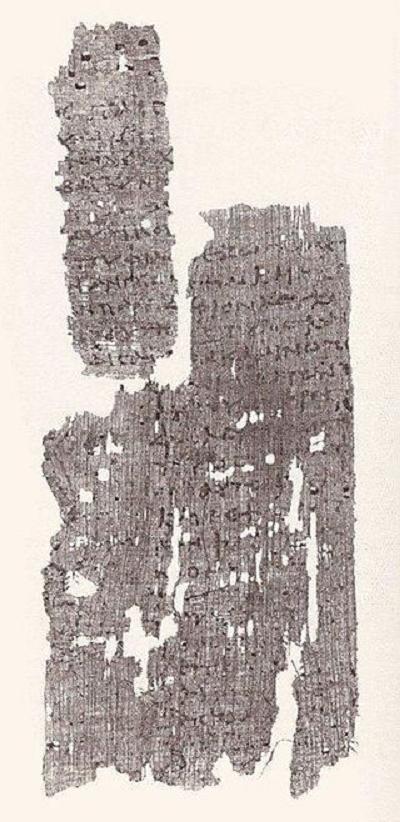| Change to Book/Chapter View |
|
|
|
Translation process is ongoing. For current status see details |
|
|

Papyrus 98 Discovered: Probably Egypt Location: Cairo Egypt: Institut Francais d’Archeologie Orientale Contents: Revelation 1:13 – 2:1 Notes: The reverse side of this papyrus is a non-biblical text.
Revelation 1 13 And among the lamp stands was one like a son of man, clothed with a robe reaching down to his feet, and with a golden sash around his chest. 14 His head and his hair were white as white wool, like snow. His eyes were like a flame of fire. 15 His feet were like burnished brass, as if it had been refined in a furnace. His voice was like the voice of many waters. 16 He had seven stars in his right hand. Out of his mouth proceeded a sharp two-edged sword. His face was like the sun shining at its brightest. 17 When I saw him, I fell at his feet like a dead man. He laid his right hand on me, saying, “Don’t be afraid. I am the first and the last, 18 and the Living one. I was dead, and behold, I am alive forever and ever. Amen. I have the keys of Death and of Hades. 19 Write therefore the things which you have seen, and the things which are, and the things which will happen hereafter. 20 The mystery of the seven stars which you saw in my right hand, and the seven golden lamp stands is this: The seven stars are the angels of the seven assemblies. The seven lamp stands are seven assemblies.
Revelation 2 1 “To the angel of the assembly in Ephesus write: “He who holds the seven stars in his right hand, he who walks among the seven golden lamp stands says these things:
|
How to read these pages: • The
translation to the left is based on the World English Bible. Words in regular
black font are words in the manuscript matching the Majority Text for that
passage. • Words
in italics cannot be seen in the manuscript, since the manuscript is
fragmentary. These words are supplied for readability by the World English
Bible translation. • Words
present in the manuscript but with some letters unreadable or missing are in blue
like this: blue. One Greek word often is
translated into multiple English words, and when this occurs, all the English
words are in blue. • Words
present in the manuscript but with spelling or trivial word order differences that do not affect the
meaning are in green like this: green. • If
the manuscript is different from the Majority Text, words in the Majority
Text that are missing from the text of the manuscript are marked through in red
like this: • If the manuscript is different from the Majority Text, words in the manuscript that are not in the Majority Text are underlined in red like this: new words.If the manuscript differs from the Majority Text yet matches another well-known text, this is noted in the footnotes.
|
